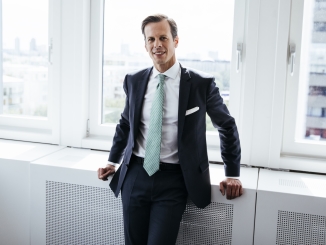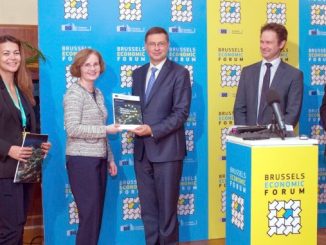
Berlin Hyp achieved its highest ever foreign distribution with a EUR500m seven year green Pfandbrief on Friday, after having waited out an “awful” market on Thursday to then attract EUR950m of orders at a level reflecting the “new world”, according to Bodo Winkler, its head of funding and investor relations.
The German issuer concluded the roadshow for its third green Pfandbrief benchmark on Wednesday, a day on which Norway’s SR-Boligkreditt had successfully launched the first euro benchmark covered bond in just over a week, a EUR750m seven year deal. However, US equities fell sharply late on Wednesday, with Asian stock markets following them down overnight.
“Everything was red when I came into the office on Thursday,” Winkler told Sustainabonds, “and the European markets started weak, too. So we decided to wait – especially as this is a special project for us. We are using EUR500m of our green assets, so we are even keener for the deal to be well received – we can only use them once and if they are used for a deal that ultimately struggles and is not bought by the targeted investors then it’s a bit of a waste.”
“The market then looked more supportive on Friday morning. Although there had been further losses in the US, Asia recovered a little bit, and we said OK, let’s open the books.”
Lead managers ABN AMRO, BayernLB, Commerzbank, Crédit Agricole and JP Morgan opened books for the EUR500m no-grow seven year issue with initial guidance of the mid-swaps minus 4bp area, before ultimately pricing the deal at minus 6bp on the back of some EUR950m of orders from 76 accounts.
“I was very convinced the deal would work out well,” said Winkler (pictured), “but I was a little bit surprised just how well it worked out, because we were able to generate a very beautiful book. In the end we had a 58% share of non-domestic investors, the highest share we have ever had in any of our benchmark covered bonds, so that was really nice.
 “The share of dedicated green investors was high as well,” he added, “a little bit above 45%, and that was of course the desired outcome, so we are very happy with that.”
“The share of dedicated green investors was high as well,” he added, “a little bit above 45%, and that was of course the desired outcome, so we are very happy with that.”
The deal’s spread of 6bp through mid-swaps compared with fair value of around 13bp through mid-swaps, based on Berlin Hyp’s secondaries, implying a new issue premium of around 7bp – although some bankers noted that a EUR1bn seven year Helaba trade quoted at minus 10bp was a more useful comparable, having been launched on 18 September, and Winkler echoed this.
“Usually when a new issue is priced a little cheaper than the outstanding curve, either the new issue tightens to the rest of the curve, or the curve widens to the newly-issued one,” he said. “This did not happen on the last two Pfandbriefe, which is a good indication that although everyone can see these prices quoted on screens for bonds issued two or three years ago, the turnover on these bonds must be very low or non-existent. This discussion about new issue premiums is therefore a bit academic.
“The parameters have simply changed, and on top of that there are so many different influences on the overall market,” added Winkler. “We are basically entering a new world, and this has to be acknowledged, but I think in the end our new issue was well priced and we were able to achieve a very good deal.”
A syndicate banker at one of the leads said the green nature of the transaction helped attract incremental demand, saying this is particularly beneficial with the European Central Bank having cut its typical buying of Eurozone benchmark covered bonds from a 30% share of new issues in the months up to September to 10% from this month, as it winds down its QE programme. The changing market has made execution trickier for recent deals, which have in some cases struggled to attract significant oversubscription and/or had to pay higher spreads.
“The book of EUR950m is a strong result,” he said. “We only have 10% participation from the Eurosystem now, and it is a positive sign to see private investors coming back at these levels – this attracted a lot of the regulars.
“If you strip away the green element, it’s a classic German Pfandbrief, with the associated tight levels,” he added. “Here, the greenness helped us give bigger book updates that only added to the momentum.”
The transaction is Berlin Hyp’s sixth benchmark green bond, with the lender being the most active green bond issuer among European commercial banks – it has sold three green senior unsecured bonds alongside its three green Pfandbriefe, for an aggregate EUR3bn. The proceeds of the issuance are used to refinance loans for green buildings.



